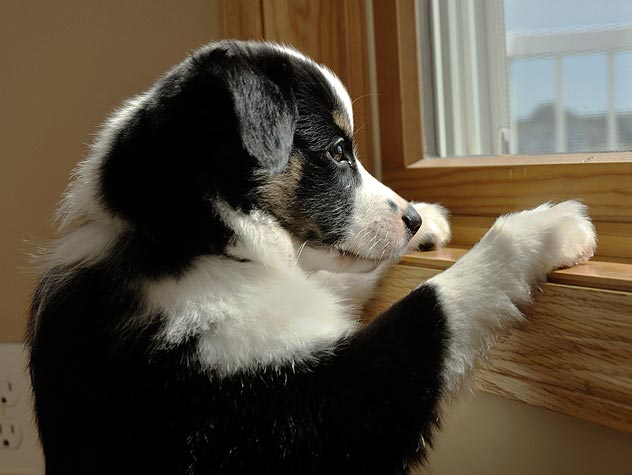How to help a pet with separation anxiety
by Ontario SPCA and Humane Society | General Pet Care | March 24, 2022

As animal parents, it can be hard enough having to leave our furry friends home alone, but knowing they’re experiencing separation anxiety can make it much harder.
While separation anxiety is not uncommon, especially for dogs, it’s important to have your veterinarian examine the symptoms of separation anxiety so you can rule out any possible medical conditions that may have similar symptoms.
Having your animal overcome their separation anxiety won’t happen overnight, but with patience and a few helpful coping mechanisms, your cat or dog will become more at ease when it comes time for you to leave the home.
Exercise
By going for a long walk with your dog before you have to leave, you’re offering some physical and mental stimulation as well as putting your pup in a calmer state before you go. We also have some great resources for enrichment ideas for your dog, either with you, or while they’re home alone.
You can also give cats a mentally stimulating environment by creating a viewing perch situated next to a window or by providing a cat tree, which will give them something to scratch, nap on, and climb. For more cat enrichment ideas, click here.
No big farewells
Animals are very perceptive when it comes to reading our emotions. That’s why it’s important to treat leaving the house as a stress-free event. That means no big goodbyes and keep the talking, petting, and eye contact to a minimum for 15 minutes before leaving and after entering the house.
Practice
Animals with separation anxiety will often pick up on a certain noise or action that indicates you’re about to leave (e.g., the sound of your keys, opening the door, or putting your shoes on). If your furry friend gets anxious at a particular trigger, try repeating the action a few times without actually leaving (e.g., picking up and putting down your keys). Eventually you can practice walking out the door and coming right back in, working your way up to five-minute departures and gradually increasing the time you’re away.
Keep to a schedule
Animals love routine. Knowing that you leave and come home at the same time every day will offer some peace of mind for your furry friend. Try keeping to a regular schedule, and if you know your schedule will be unpredictable for a few days, have a family member or dog sitter stay with your dog.
An animal with separation anxiety may look for ways to relieve their stress, which can take the form of scratching, chewing or having accidents around the house. It’s important that you stay patient and not scold your furry friend. By working with your animal gradually, your dog or cat will eventually become more at ease and less anxious while you’re away. You can also make note of these behaviours and report to your veterinarian if you have concerns they may be related to other health issues as well.
Categories
Testimonial
Thank you for looking after these animals
Thank you for looking after these animals — I would love to have them all in my house!
